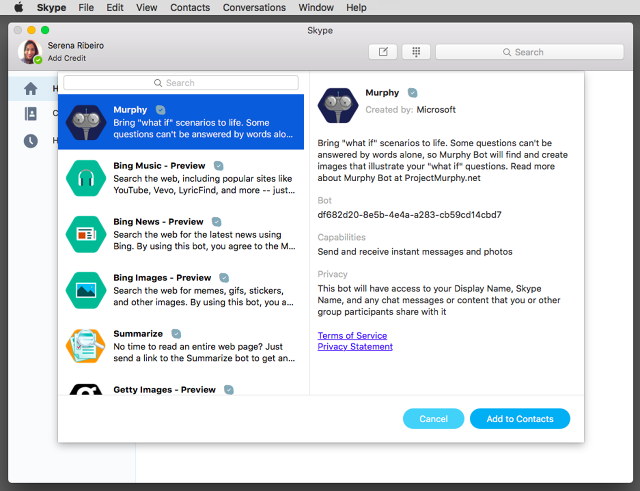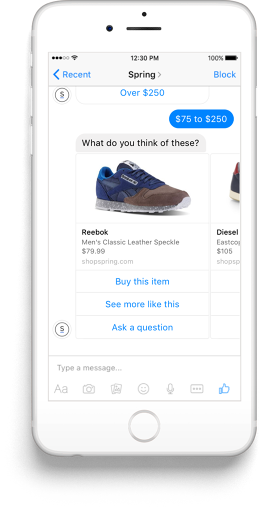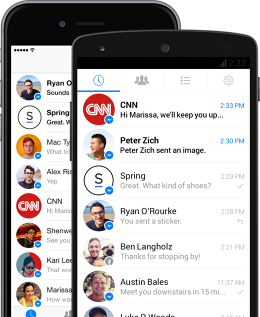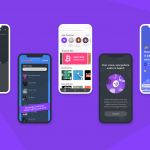Bot Wars: Why Big Tech Companies Want Apps To Talk Back To You
The rise of conversational “chatbots” begins with a claim you might initially dismiss as preposterous. “Bots are the new apps,” Microsoft CEO Satya Nadella declared during the company’s Build developers conference last month. “People-to-people conversations, people-to-digital assistants, people-to-bots, and even digital assistants-to-bots. That’s the world you’re going to get to see in the years to come.”
Nadella is not alone in seeing bots as a radical change in how we interact with computers. Beyond Microsoft—which is now offering bots within Skype to help you book hotels and flights, and a bot-building tool suite for developers—other major tech players are jumping in. Facebook is bringing a suite of chatbots to Messenger to help you order flowers or check the weather, taking a page from other messenger apps like WeChat and Kik. Slack allows third-party chatbots for work that can coordinate lunch or order supplies. Around these efforts, an entire industry has sprung forth, as smaller startups build their own bots and bot-related tools.
As is common with big technological changes, it may be hard to see how something in its infancy might displace the current way of doing things. Why talk to a bot when you can browse a website? Why waste time with conversation when you can navigate precise menu options?
Certainly, Nadella’s assertion about the rise of chatbots contains a dose of hyperbole—a chatbot isn’t going to replace every application you might want on a computer—but that doesn’t mean bots don’t matter. Just as smartphone apps made us rethink how we interact with computers, bots could have a similarly transformative effect. And the ones who are betting on it now, like Nadella and Mark Zuckerberg, will have the last laugh.

What’s A Bot, Anyway?
Part of the problem with understanding bots is that the term has no rigid definition. So let’s start with this: If the interaction is with a non-human entity, and at least vaguely resembles the back-and-forth nature of conversation, it’s a bot.
Within this loose definition, there’s a lot of room for variety.
Some examples, like the news bots from CNN and Wall Street Journal for Facebook Messenger, don’t interact primarily through typing or speaking. Instead, they briefly summarize a story and present pre-written responses for getting more details or passing onto the next topic. The shopping app Spring largely dispenses with text and instead presents a carousel of products, which users can browse and order with a tap. The interaction happens within a messaging window, but it doesn’t much resemble talking.

“The conversational element is not critical to these types of bots,” says Eric Soelzer, product manager for a trainable Slackbot called Howdy. “It’s more going to be an experience of how you can guide people through a script with the least amount of friction possible.”
The degree to which a chatbot requires personality is also up for debate. Although virtual assistants like Siri have trained us to expect lighthearted banter from bots, sometimes that does more harm than good. Soelzer says Howdy learned this from experience while building its work helper bot for Slack.
“We hired a friend of ours who’s a comic writer to write up a bunch of the dialog for the bot, and it turned out that it was just too zany for a lot of teams,” Soelzer says. “Some people enjoyed it, but others are in a more professional environment where that’s not so cool.”
The best way to think about bots, then, is as a new kind of interaction model. Just as mobile apps cut away the sprawling menus of desktop software, chatbots funnel users into a narrow set of interactions that are similar from one bot to the next. Whether that happens through text or by voice, or whether there’s witty banter involved, is secondary.
“You don’t have to know any new interfaces,” says Ilya Gelfenbeyn, CEO of Api.ai, which helps developers create conversational bots. “You just tell it what you want, and you get the answer.”
Why The Bot Invasion Is Nigh
Chatbots are not a new concept, but a confluence of factors have suddenly made them fashionable.
Businesses and software makers have realized that apps are a tough business. Users tend not to download or use a lot of new apps, and not everyone wants a separate app just to read the news or shop for flowers. A platform like Facebook’s Messenger, with its 800 million users, presents an opportunity.
“All of this is governed by friction, and he who offers the least friction wins,” says Robert Stephens, cofounder of a bot creation company called Assist.
Before cofounding Assist, Stephens was the founder of Geek Squad and a CTO at Best Buy, and he’s especially jazzed about the possibility of better customer service through chatbots. The hope is that the collective intelligence and memory of bots will excel at solving problems compared to an endless chain of clueless customer support representatives. Humans would only step in when absolutely necessary—and they’d have the bots’ entire chat thread to reference.
“We’ve been abused in a Stockholm syndrome as customers for so long, and abandoned all hope that this could get better,” Stephens says. “I don’t think you have any idea how good this is going to get.”
For Facebook and Microsoft, bots are a strategic opportunity as well, especially in mobile. Microsoft’s Windows Phone is an also-ran, and Facebook never attempted its own operating system, but both companies have lots of users on, respectively, Skype and Messenger. The push to replace apps with chatbots is on some level a way to establish mobile ecosystems they can control (and monetize through e-commerce or message-based advertising).
Now is just the right time to do so, as the barriers to creating intelligent helper bots have fallen. Natural-language processing, which researchers have discussed theoretically for decades, is now possible thanks to cloud-based data storage and processing power, says Api.ai’s Gelfenbeyn. That means users don’t have to memorize specific syntax to speak with machines. And with the rise of virtual assistants like Siri and Google voice search, users are now more comfortable with the concept of conversing with bots.
“Roughly in 2012, there was a huge shift, and this is all about machine learning now,” Gelfenbeyn says.
Can Bots Really Replace Apps?
Dedicated apps obviously aren’t going away, just as multi-purpose desktop software hasn’t vanished amid the explosion of simpler, more specialized apps. A better question is how much of an app’s utility can be supplemented or replaced by bots.
You may, for instance, continue to use the full-blown Spotify or Pandora apps for music, but a bot might replace the search bar that helps you decide what to listen to. You may still turn to Gmail to write an email, but a bot may help you remember what points to raise or what attachments to include. Inevitably, the lines between bot and app will blur.
But this isn’t going to happen overnight. Despite all the hype and excitement around bots, plenty of obstacles remain.
Tone and personality are still major challenges. As Soelzer notes, every individual or business has different expectations for how a bot should behave, and those expectations can change depending on what the bot is meant to accomplish. To strike the right balance, bots will have to become smart enough to read the room and adjust their behavior accordingly.
“That’s the sort of stuff that we want to use machine learning and natural language processing to find out,” Soelzer says. “How do people talk to bots? Are they more aggressive? Are they more loose? Can we adjust our bot’s personality to fit onto the team like that?”

This assumes the bot in question is even useful to begin with. Early reviewers of Facebook Messenger complained of slow response times and miscommunications, sometimes finding they were better off using an app or website instead. The current situation is reminiscent of the iOS App Store’s early days, as big brands flooded the store with shoddy ports of their mobile websites. As with apps, figuring out what makes a great bot will take time, and not everyone’s going to have the patience.
“You can already see it now,” Soezler says. “[Developers] want to be part of this so badly that they’re pushing out stuff that really shouldn’t be interacted with.”
Even as bots get better, users will need some sort of overarching intelligence to deal with them all—a master bot that summons the right helper at the right time, and helps safeguard your personal data. Otherwise, the process of acquiring and managing bots won’t be much better than downloading a bunch of separate apps, says Gelfenbeyn.
“What you really need to be able to do is say what you want in one window, and get an answer from a bot that’s relevant,” Gelfenbeyn says.
You can see the early makings of these super-bots in virtual assistants like Microsoft’s Cortana and Facebook M, and this may explain why Nadella and Zuckerberg are so hyped on the concept: If bots are as transformative as they hope, they’ll have a massive head start on the computers of the future.
Fast Company , Read Full Story
(24)














